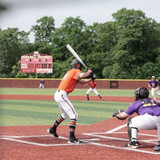Comparing The Different Illegal Softball Pitches
Shop Prescription Glasses for Softball

Even you are a pitcher or not, it’s important for every softball player to familiarize themselves with the different types of illegal pitches. When they occur, the umpire should call an illegal pitch, resulting in an extra ball and the advancement of any runners on base.
Pitching With Only One Planted Foot
In order for a softball pitch to be considered legal, the pitcher must have both of his or her feet on the ground when the ball is released. This is the most common reason why illegal pitches are called in softball. If you’re pitching, be sure to release the ball only after you’ve placed your non-pivot foot back on the ground. Otherwise, you run the risk of giving the batter a free ball.
Crow Hopping
Another common reason why illegal pitches are called is due to something known as “crow hopping.” As the name suggests, this is when the pitcher winds up, plants both feet down and essentially hops forward. While it may not seem that serious of an issue, it cuts the distance between the batter and the pitcher, therefore giving the pitcher an unfair advantage. Crow hopping usually occurs when the pitcher lands his or her foot down on the mound and hops forward slightly.
Height of The Ball
The rules for slow pitch softball state the ball must be thrown in an arc ranging from 6 to 12 feet. If the ball is thrown out of these boundaries, it’s considered an illegal pitch. It’s important to note that this rule is only in affect for slow pitch and not fast pitch softball. It may take some practice before you’re able to consistently pitch in this height range, but like everything, practice makes perfect.
Releasing The Ball Too Early
If the pitcher releases the ball before the umpire or batter is ready, an illegal pitch can be called. Just like MLB, a softball pitcher can only throw a pitch once everyone is ready, including the umpire. If you’re unsure of whether or not everyone is ready, you can make eye contact or gesture to the umpire to confirm.
While this may seem like a lot of rules to follow just for pitching, it's probably stuff that you already naturally do. Just keep throwing strikes and be aware of your throwing position. If you find yourself inadvertently stepping forward of pitching with a foot off the ground, correct yourself and change your technique.

 Canadian Dollar (CAD)
Canadian Dollar (CAD)
 Euro (EUR)
Euro (EUR)
 British Pound (GBP)
British Pound (GBP)






